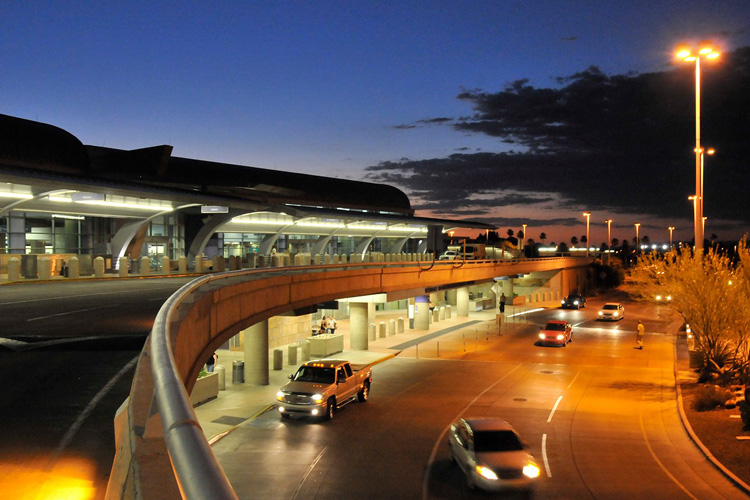In addition to serving as a significant transportation hub for Tucson, Tucson International Airport (TIA) is proving to be a valuable driver of economic development.
While producing an impactful $7 billion annual economic impact, TIA continues to attract businesses near and far. With plenty of room to grow; an all-access infrastructure, including access to Interstate-19; a location just an hour or so from the Mexican border; and already home to competitive business sectors like aerospace and defense, TIA is Tucson’s premier place to park a business.
“TIA plays a critical role in some of Southern Arizona’s largest business sectors,” says Lisa Lovallo, market vice president at Cox Communcations and a member of Sun Corridor Inc.’s Chairman’s Circle. “Our airport is home to one of the largest Air National Guard units in the U.S.. It is also a critical part of our aerospace and defense sector and Davis Monthan Air Force Base and Pima Community College’s workforce development programs. TIA is an important partner in Southern Arizona’s tourism and attractions business as well, with almost 3 million passengers choosing to fly through TIA annually.”
A major component of Sun Corridor Inc.’s economic development efforts is to help highlight the existing presence of various industry occupants in the TIA Airport Employment Zone.
Harsch Investment Properties, for example, acquired a 113,546-square-foot industrial building with an additional 15 acres of adjacent land for future development. The property is located just one mile north of Tucson International Airport and two miles west of Interstate-10.
“My company is fairly new to the Tucson market,” says Bill Rodewald, Harsch Investment Properties’ senior vice president and a member of Sun Corridor Inc.’s Chairman’s Circle. “We purchased our first industrial building four years ago. Because of the multi-tenant distribution product we sell, we fell in love with the TIA location.”
In addition to the physical placement of Harsch Investment Properties, Rodewald has been equally pleased with the process of site selection and development. “We’ve never been in an environment that collaborates as successfully as Sun Corridor Inc., the City of Tucson and Pima County,” Rodewald says. “In Tucson, we felt that everyone is pulling on the same oar and it’s very exciting to us.”
The Airport Employment Zone has also attracted companies such as Bombardier, Raytheon Missile Systems, Universal Avionics, and FedEx, among many others.
“We’re always looking to attract new industries,” says Joe Snell, Sun Corridor Inc.’s president and CEO. “Commercial aerospace, maintenance and repair hubs and organizations, flight schools and MROs (maintenance, repair and operations) work well close to airports. We’re also really trying to take a visionary and bold approach in our focus on commercial development.”
Snell spends a significant amount of time focusing on his time focusing on TIA as a transformative market. “We need to turn this into a commercial economic driver and that’s what we’re working on full bore,” he says.
“The future is very bright for Tucson and TIA,” Lovallo adds. “We have secured a $280 million runway safety enhancement grant from the federal government, which will improve our overall efficiency and safety. This large-scale project will be completed in 2022. In addition, TIA’s refreshed 10-year strategic plan will be completed this summer. We are focused on providing the best airport possible today and into the next decade.”




